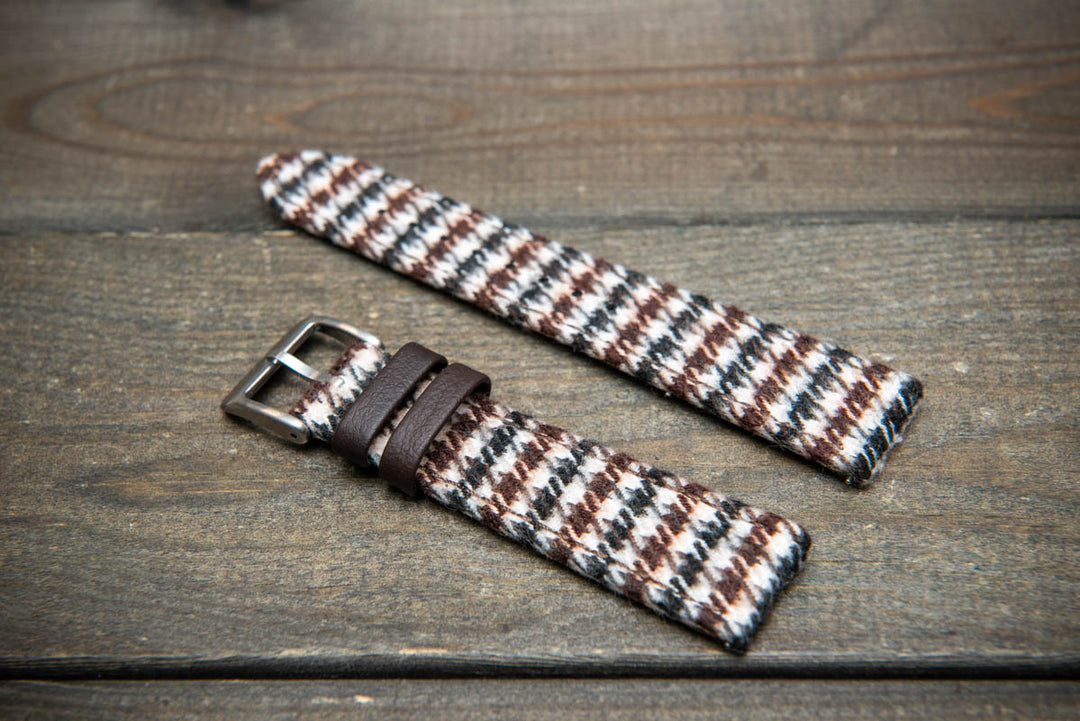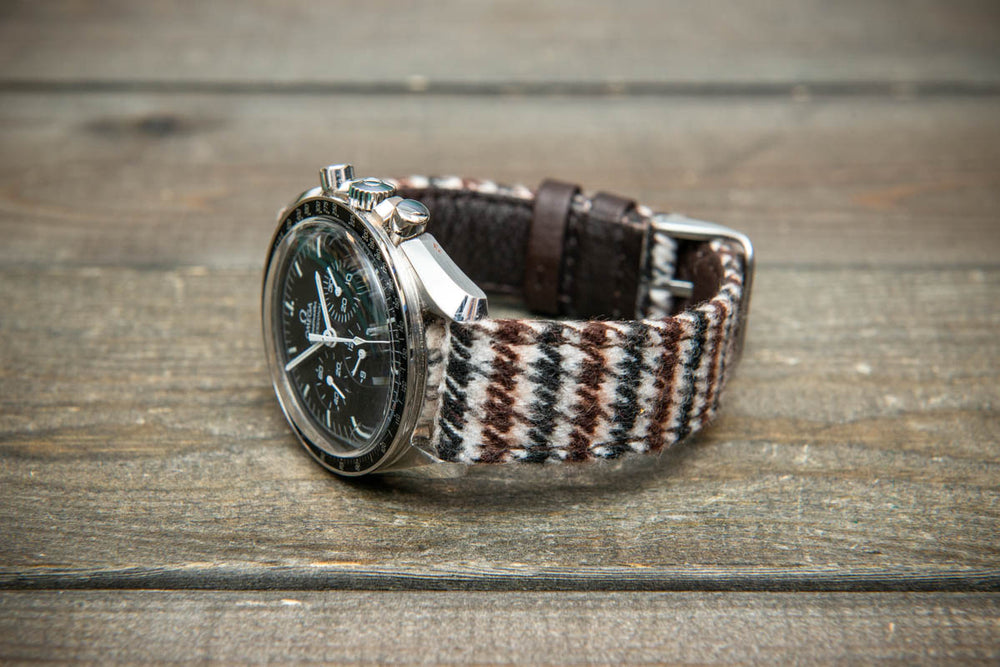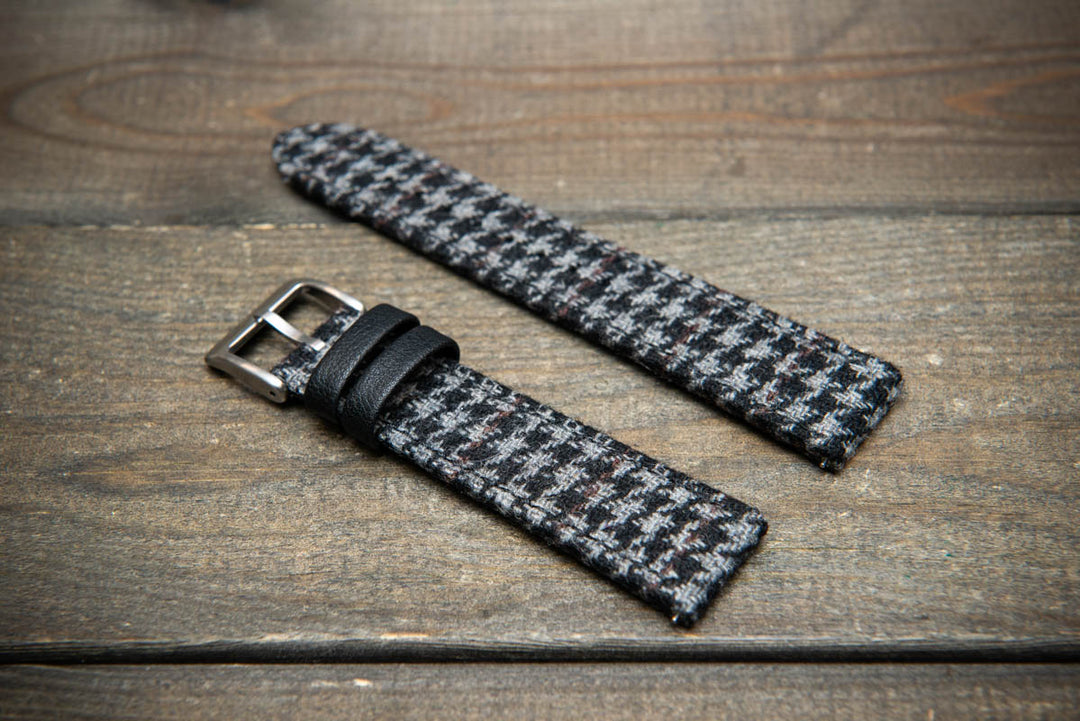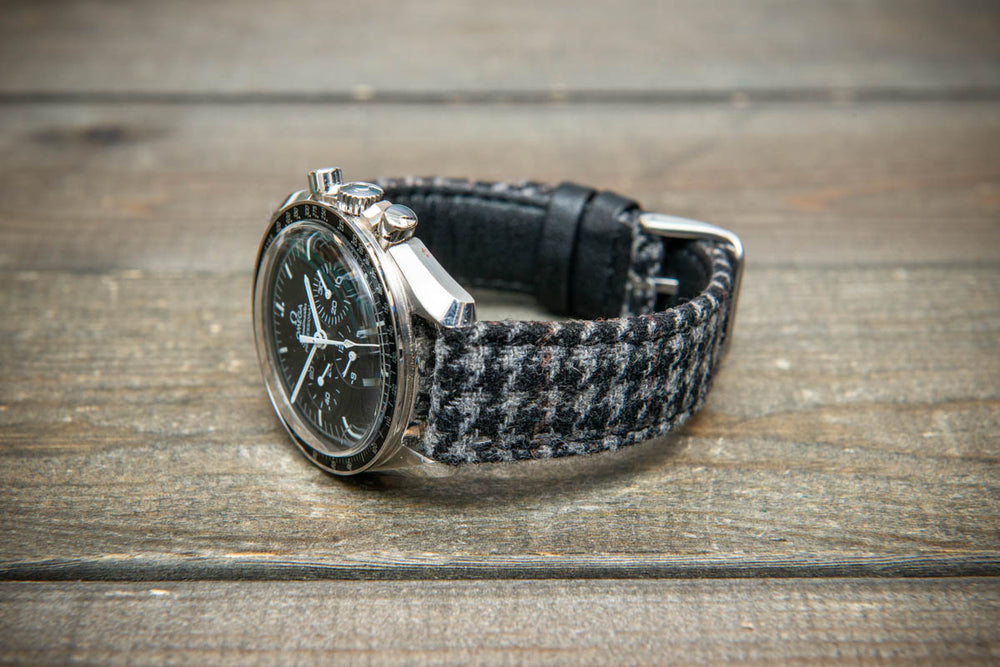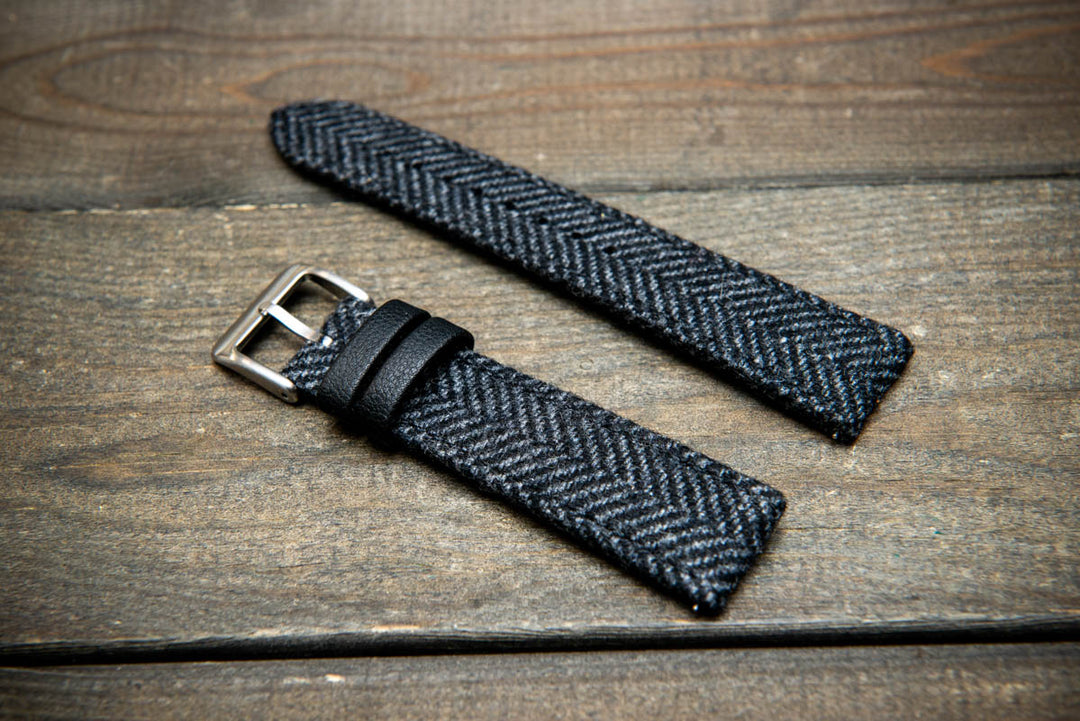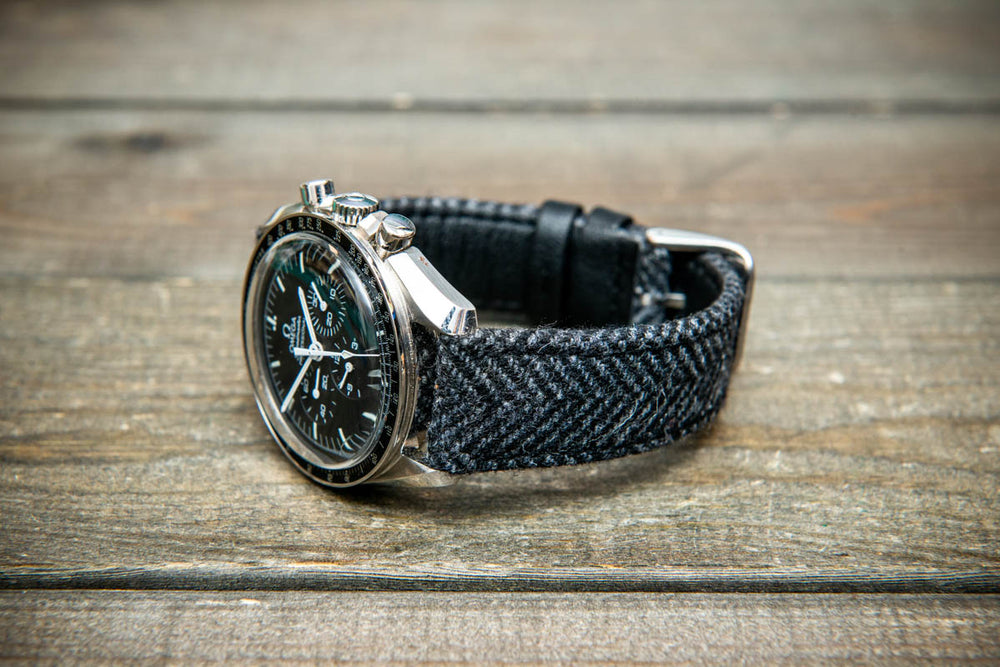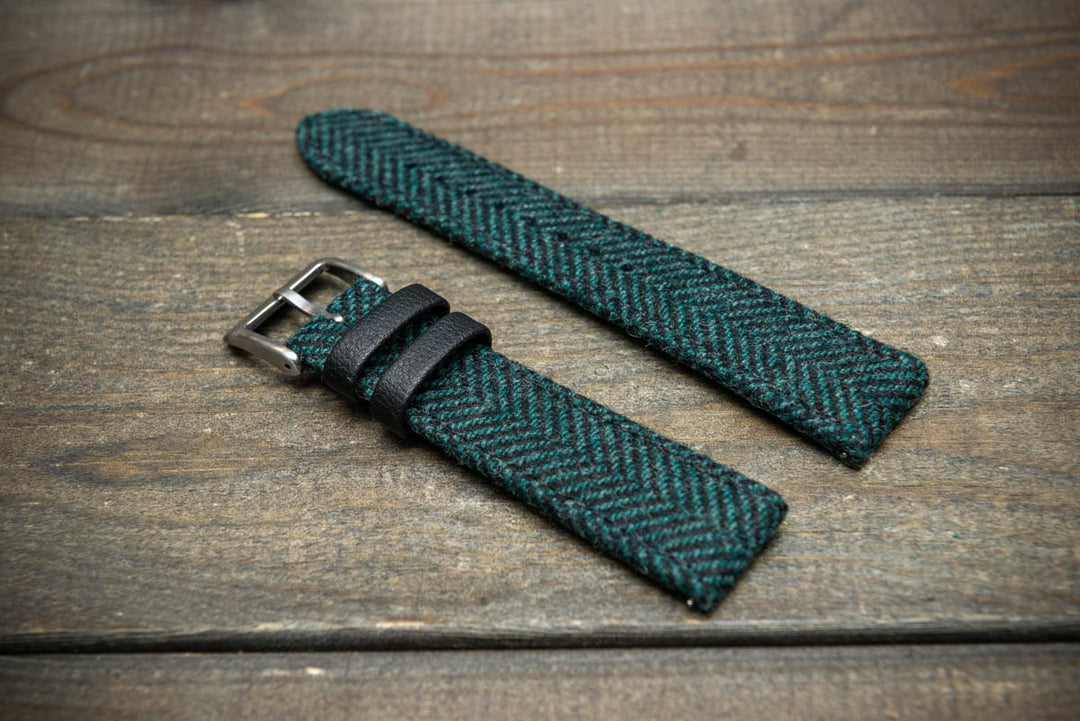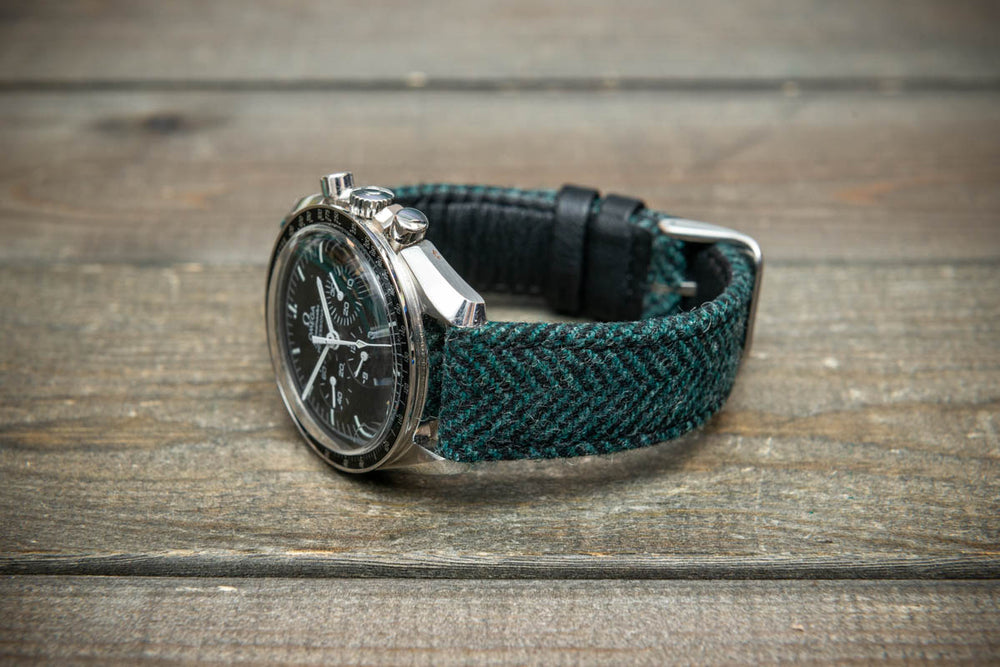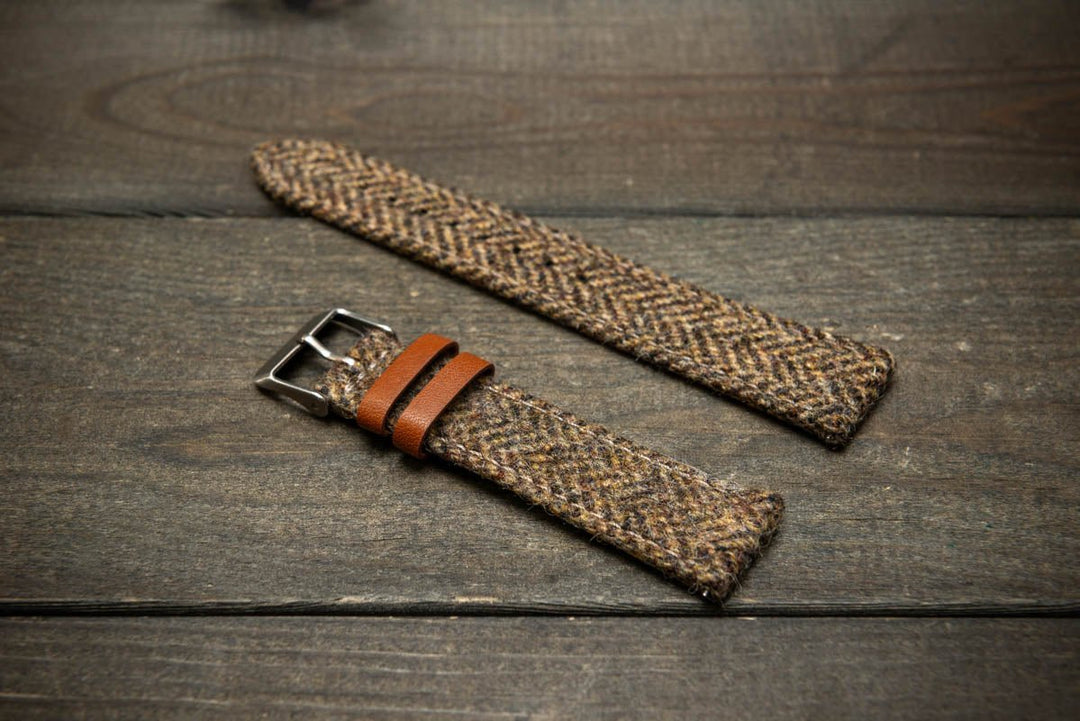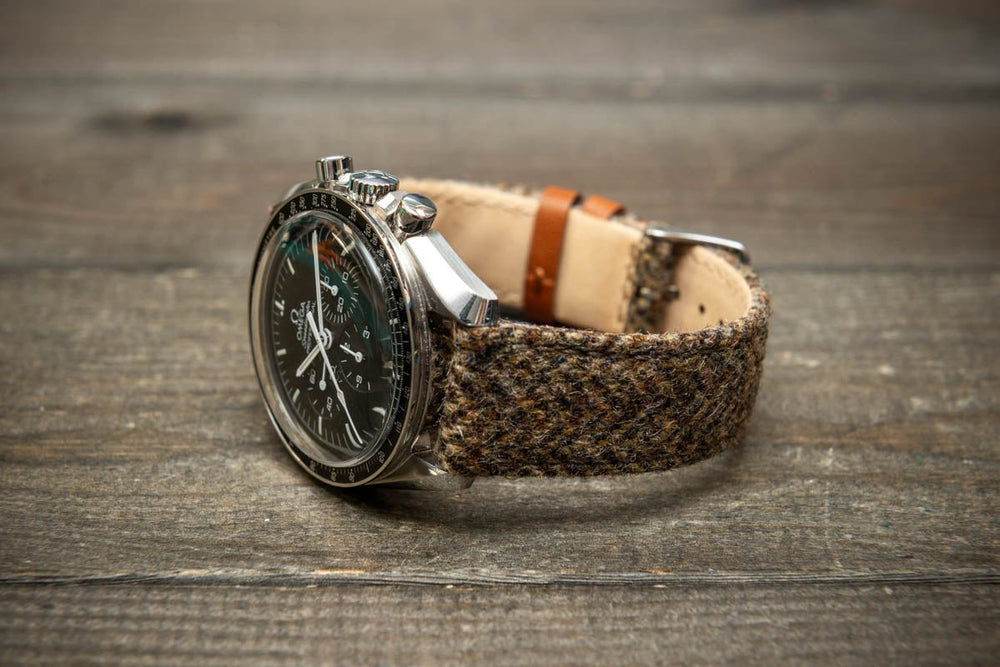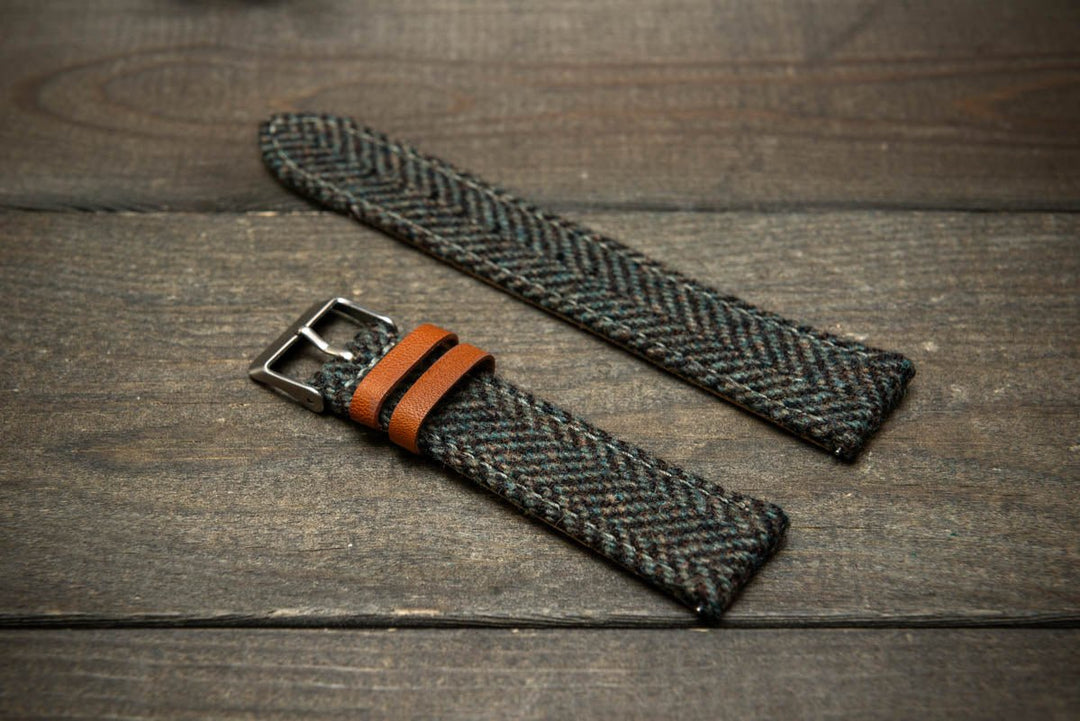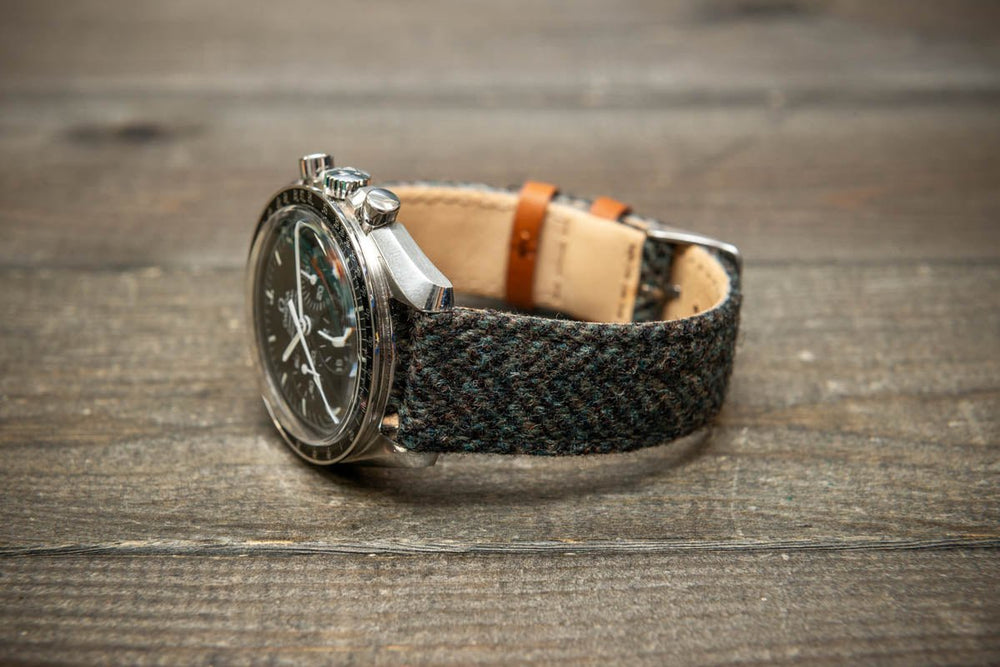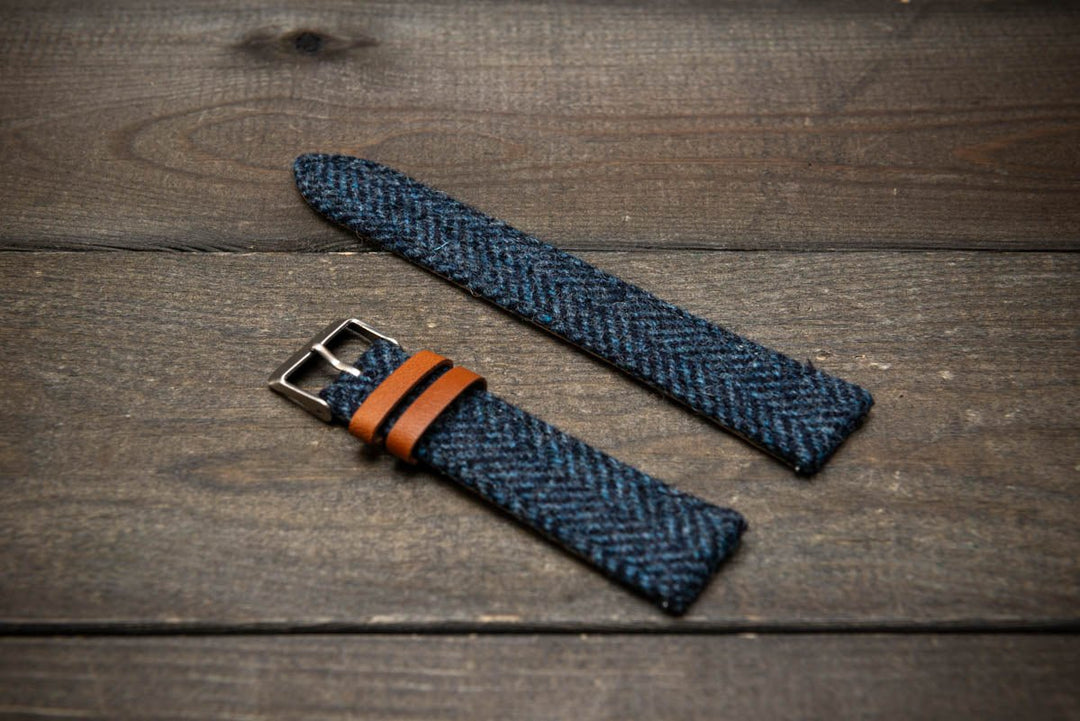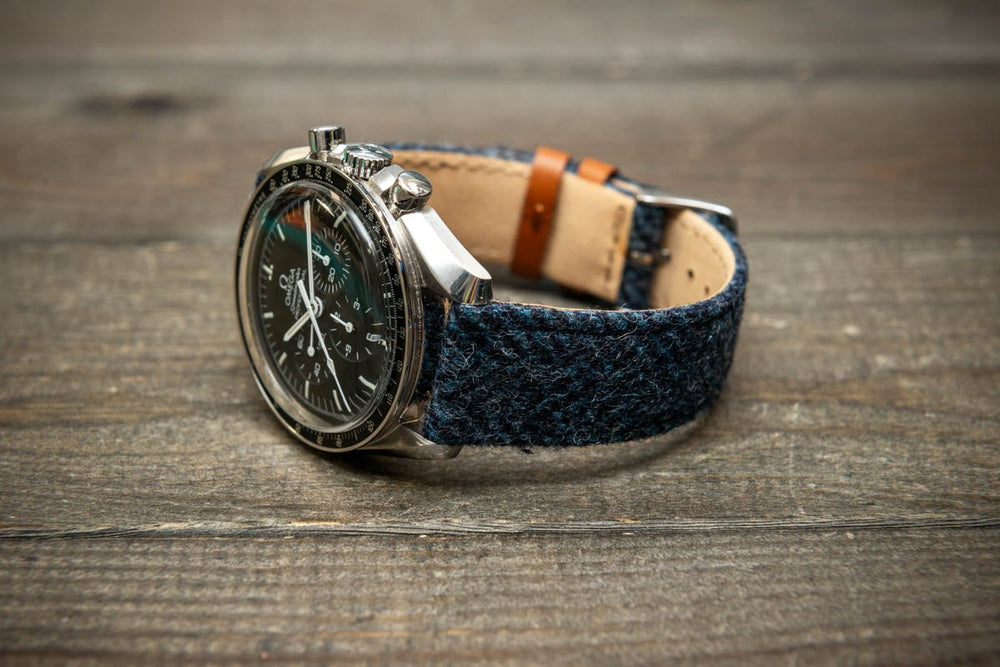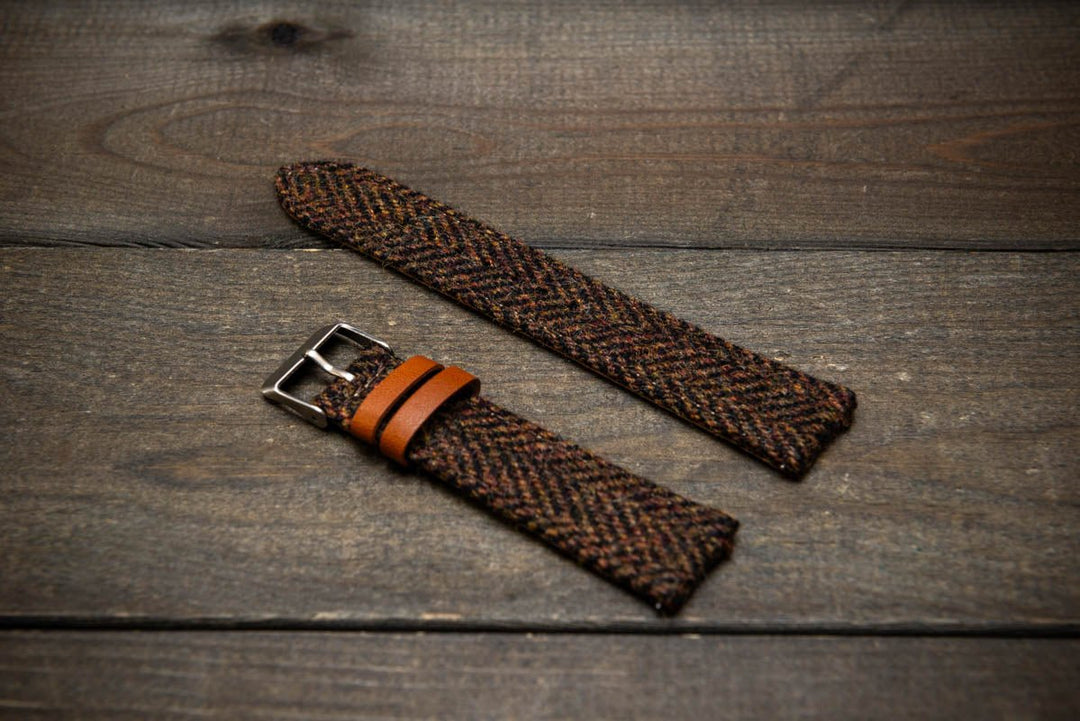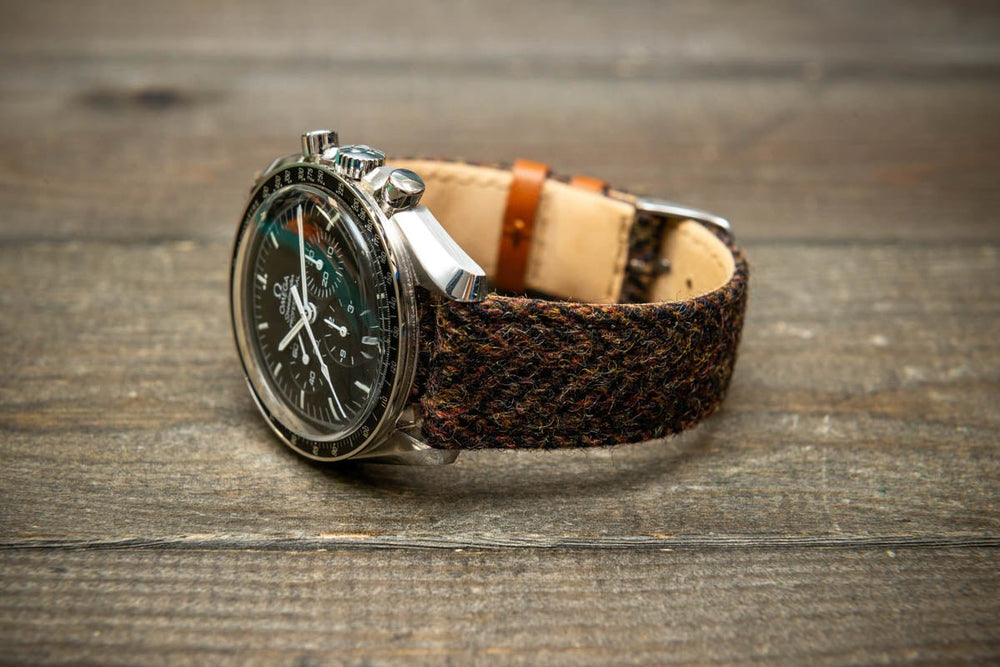Why Genuine Leather is the Best Choice for Vintage Watch Straps
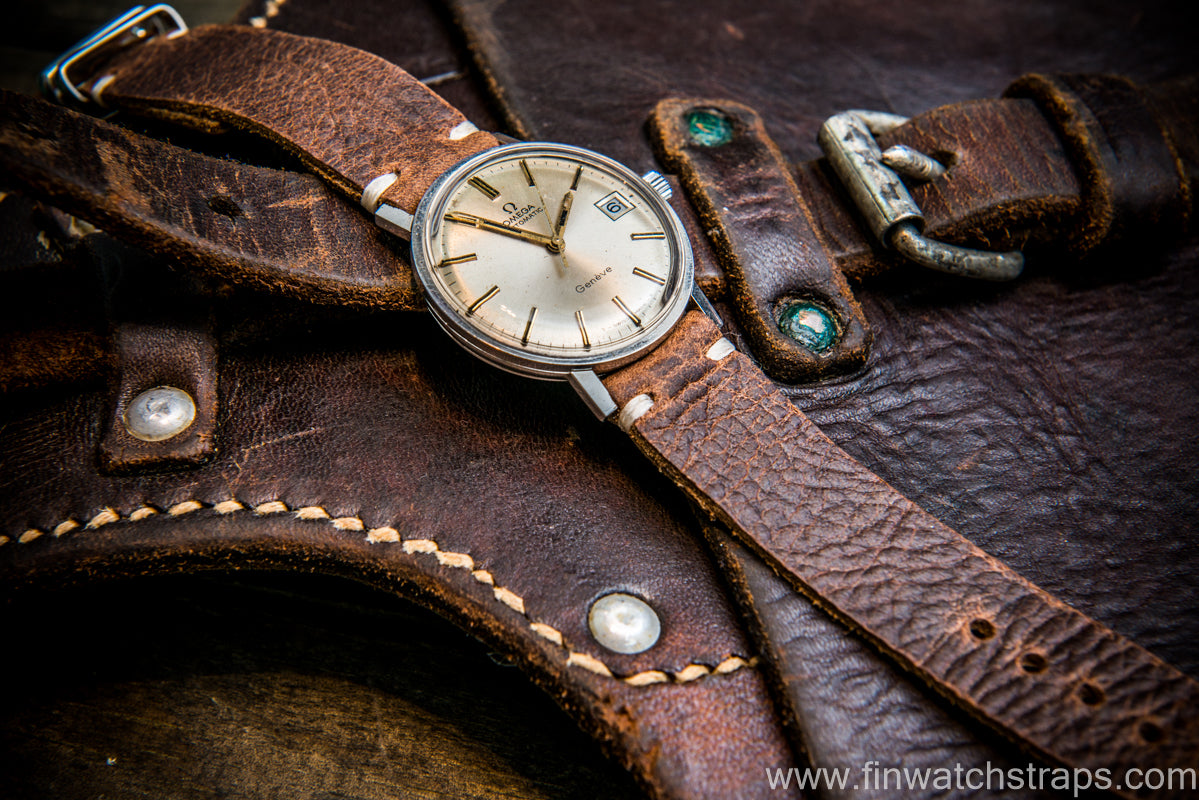
For any watch enthusiast, a vintage timepiece is more than just a way to tell time; it’s a link to the past, a small piece of history that you can wear on your wrist. Choosing the right strap isn’t just about aesthetics; it’s about complementing the unique charm of a vintage watch. When it comes to vintage timepieces, genuine leather has long been considered the best choice for straps. Why? Because it has a personality and character that other materials simply can’t match.
In this article, we’ll explore why genuine leather is the ultimate choice for vintage watch straps. From its unique look and feel to its durability and graceful aging, let’s dive into the qualities that make leather the perfect partner for a timepiece with a story.
The Timeless Appeal of Genuine Leather
One of the biggest reasons why genuine leather is favored for vintage watch straps is its timeless appeal. Leather has been used for centuries, from saddles to belts and, of course, watch straps. This organic material has an authenticity that’s impossible to replicate with synthetics. Each leather strap has a natural texture, slight imperfections, and a richness in color that make it unique.
Think of it like this: A brand-new stainless steel or synthetic strap can sometimes feel too perfect, almost out of place on a vintage watch. Leather, on the other hand, has a natural warmth and character that complements the aged beauty of vintage watches. A leather strap can make an already charming timepiece even more captivating.
Example: Imagine finding a 1950s Omega, one of those watches that’s clearly been through life. It has a faded dial, slight scratches on the case — the kind of watch that’s been places. Pairing it with a leather strap that has its own natural variations and textures just feels right. Together, they tell a story that’s impossible to replicate with a factory-fresh strap.

Leather’s Unique Patina: Aging Gracefully
One of the standout qualities of genuine leather is its ability to develop a patina over time. Patina, the soft sheen or darkening that appears with wear, is a prized feature in leather. As leather ages, it tells a story — the oils from your skin, exposure to sunlight, even everyday wear contribute to the rich, complex look it takes on over the years. This evolution gives leather an authenticity and depth that’s ideal for vintage watches, which themselves often carry signs of age.
Imagine this: You have a leather strap that starts out as a warm brown. Over time, it darkens in some areas, lightens in others, and takes on a subtle shine. Now, every time you look at your watch, you’re reminded of the countless days and memories that have helped shape its look. It’s like seeing a small piece of your life right there on your wrist, intertwined with the watch’s own journey.
Example: Think of a 1960s Rolex Datejust with a leather strap that has developed a caramel-like patina. The watch’s dial has faded slightly, and the strap has taken on a unique coloration that you couldn’t find on any new leather. Together, they create an effect that’s both beautiful and deeply personal. The strap isn’t just an accessory; it’s part of the watch’s history.
Comfort and Flexibility: Leather That Molds to You
Genuine leather is renowned for its comfort, which is particularly important for a watch strap that’s worn daily. Leather has a unique quality: it molds to your wrist over time, creating a custom, comfortable fit that feels like it was made just for you. This isn’t something you get with synthetic materials, which can feel stiff and unyielding.
Unlike synthetic straps, which can feel rigid, leather becomes softer with use. This flexibility is perfect for vintage watches, which often have smaller, more delicate cases. Leather straps provide a secure yet gentle hold, allowing the watch to sit naturally on the wrist without feeling bulky.
Imagine: You’ve found a beautiful vintage Jaeger-LeCoultre with a slim case, maybe around 34mm. Pairing it with a genuine leather strap ensures it sits elegantly on your wrist, molding to the contours of your arm over time. The comfort is unmatched, and each day the strap feels more like a natural extension of you, rather than just an accessory.
Durability: Built to Last, Just Like a Vintage Watch
Despite its flexibility, genuine leather is remarkably durable when properly cared for. A high-quality leather strap can last for years, even decades, making it an ideal match for vintage watches that have already stood the test of time. With the right care, a leather strap will develop character while remaining structurally sound, much like the watch it’s paired with.
Leather’s durability is further enhanced through the tanning process, which strengthens its fibers. Vegetable-tanned leather, in particular, is highly prized for vintage-style straps due to its longevity and eco-friendliness. This type of leather develops a beautiful patina and can withstand daily wear and environmental factors.
Example: Let’s say you inherit a vintage Longines from your grandfather, and its leather strap is worn out. Replacing it with a high-quality, vegetable-tanned leather strap ensures that the watch will remain wearable for decades to come. The strap will age gracefully alongside the watch, creating a harmony that only genuine leather can provide.
Authenticity and Craftsmanship: Leather Is for Purists
When you choose a genuine leather strap for a vintage watch, you’re choosing authenticity and craftsmanship. Leatherworking is an art form, and each strap is often the result of careful tanning, cutting, and stitching processes. Many leather straps are still made using traditional methods, such as saddle stitching, where each stitch is made by hand. This technique not only enhances durability but also adds an artisanal touch that perfectly complements the character of a vintage watch.
In contrast, synthetic straps are usually mass-produced with minimal attention to detail. Leather straps, especially those crafted using traditional methods, offer a level of authenticity that synthetic materials simply can’t replicate.
Imagine: A vintage Cartier Tank paired with a handmade, saddle-stitched leather strap. Each stitch tells a story of craftsmanship, each edge has been carefully burnished, and the strap looks as if it were made specifically for that watch. It’s a subtle luxury that mass-produced synthetic materials can’t compete with.
Sustainability: A Natural Choice
With growing awareness of environmental issues, many watch enthusiasts are now considering the sustainability of their accessories. Genuine leather, especially vegetable-tanned leather, is a more eco-friendly choice compared to synthetic materials, which are often derived from petroleum-based products and take a long time to break down.
Leather is a natural material, and when sourced responsibly, it’s a more sustainable option. Additionally, leather products tend to last longer, reducing the need for frequent replacements. This aligns perfectly with the ethos of vintage watch collectors, who value preserving history rather than constantly replacing items.
Example: If you’re someone who values sustainability, choosing a genuine leather strap over a synthetic one means making a responsible choice. And as the strap ages and develops its patina, you know you’ve chosen a material that complements not only your vintage watch but also your values.
Versatility: Leather’s Many Faces
One of the great benefits of leather is its versatility. Leather straps come in a range of finishes, colors, and textures, allowing you to customize the look of your vintage watch. From full-grain leather with its natural texture to distressed leather that adds a rugged feel, there’s a leather strap to suit every style.
For instance, a distressed leather strap pairs beautifully with military-style vintage watches, enhancing their rugged charm. On the other hand, a polished leather strap can elevate a classic dress watch, making it suitable for formal occasions. Leather’s versatility makes it easy to find a strap that enhances the unique personality of your vintage timepiece.
Imagine: You have a 1940s Hamilton field watch. Pairing it with a distressed brown leather strap brings out the watch’s rugged, utilitarian character, as if it’s been on a journey through history. The strap looks like it’s part of the watch’s story, and every scratch and variation in color tells a tale.
Conclusion: The Perfect Partner for a Vintage Watch
Genuine leather is the ideal companion for vintage watches. It ages beautifully, offers unparalleled comfort, and respects the heritage of watchmaking. Leather’s natural elegance, combined with its ability to develop a patina and adapt to your wrist, makes it the perfect choice for those who value authenticity and craftsmanship.
If you’re looking to elevate your vintage watch, consider a genuine leather strap. It’s more than just a way to wear your watch; it’s a piece of history in its own right, a strap that will age and evolve alongside your timepiece, creating a one-of-a-kind look that reflects your personal journey


